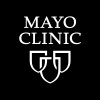
A Study to Test the Efficacy, Safety, and Pharmacokinetics of Rozanolixizumab in Adult Study Participants...
Leucine-Rich Glioma Inactivated 1 Autoimmune EncephalitisThe purpose of the study is to assess the efficacy of rozanolixizumab as measured by seizure freedom, change in cognitive function, use of rescue medication, onset of seizure freedom and to assess safety and tolerability.

Sonification Techniques for Gait Training
Parkinson DiseaseStroke1 moreMusic therapy is widely used in relational and rehabilitation settings. In addition to Neurologic Music Therapy and other music-based techniques, "sonification" approaches were recently introduced in the field of rehabilitation. The "sonification" can be defined as a properly selected set of sonorous-music stimuli are associated with patient movements mapping. In fact, the auditory-motor feedback can replace damaged proprioceptive circuits with a consequent improvement of the rehabilitation process. Interventions with "sonification" facilitate sensorimotor learning, proprioception and movements planning and execution improving global motor parameters. This study proposes the use of musical auditory cues which includes the melodic-harmonic component of the music. This kind of sonification makes the feedback pleasant and predictable as well as potentially effective. The investigators propose to apply and assess the effectiveness of this kind of sonification on gait training and other secondary outcomes in stroke, Parkinson's disease and multiple sclerosis population. Also, the investigators will assess the impact of "sonification" on the level of fatigue perceived during the rehabilitation process and on the quality of life. The study is a multicenter randomized controlled trial and will involve 120 patients that will undergo standard motor rehabilitation or the same rehabilitation but with the sonification support. The interventions will be evaluated at the baseline, after 10 sessions, after 20 sessions and at follow-up (one month after the end of the treatment). The assessment will include functional, motor, fatigue and quality of life evaluations. The collected data will be statistically processed.

Tocilizumab in Active Moderate-severe Graves' Orbitopathy
Graves OphthalmopathyTo treat patientis with active moderate-severe GO with the anti-IL6 receptor monoclonal antibody tocilizubam with the purpose of assesing the efficacy of therapy on active GO and on the proportion of patiens with inactivation and reactivation of disease (Primary Objective) Effect of therapy on disease progression, improvement of QoL, the degree of residual disease after the inflammatory phase and safety of treatment (Secondary Objective)

Study of Safety and Efficacy of Iberdomide (CC-220) and CC-99282 Combined With R-CHOP to Treat Lymphoma...
LymphomaB-CellThis is a Phase 1b study consisting of 2 parts: a dose escalation (Part 1) of CC-220 or CC-99282 added to the standard R-CHOP-21 regimen for first-line treatment of a-BCL. The dose escalation (Part 1) will consist of 2 parallel arms in combination with Rituximab, Cyclophosphamide, Doxorubicin, Vincristine, and Prednisone (R-CHOP-21); CC-220 and R-CHOP-21 or CC-99282 and R-CHOP-21. Part 1 will be followed by a randomized dose expansion (Part 2) with CC-220 and/or CC-99282 at the Recommended Phase 2 Dose (RP2D) in combination with R-CHOP-21. A polatuzumab-R-CHP regimen in combination with CC-220 or CC-99282 will be explored with the addition of a new cohort only after the RP2D for the CC-220 and/or CC-99282 and R-CHOP-21 combination has been defined.

Daratumumab to Treat Active Lupus Nephritis
Lupus NephritisThe purpose of this research is to study the safety and efficacy of daratumumab in inducing complete or partial remission in patients with active lupus nephritis.

Combination of Baricitinib and Anti-TNF in Rheumatoid Arthritis
Rheumatoid ArthritisAs stated by the European League Against Rheumatism (EULAR) and the Société Française de Rhumatologie (SFR), treatment of patients with rheumatoid arthritis (RA) should target sustained remission or at least low disease activity. However, despite significant advances based on various combinations of conventional synthetic disease-modifying antirheumatic drugs (DMARDs) and biologic DMARDs, RA therapies meet treatment goals only in some patients: 40 to 50% of patients with early RA, treated with methotrexate (MTX) monotherapy as first-line therapy, 20 to 30% of patients treated with a combination of MTX and biologic as second-line therapy. Less than 10% of patients treated with a combination of MTX and another targeted DMARD, such as baricitinib, as third-line therapy. Therefore, new strategies targeted at achieving a higher percentage of remission are needed, that do not require waiting for multiple failed therapies. Combinations of biologics have shown synergistic improvement of symptoms in murine models of RA relative to the improvement observed with either agent alone. However, in RA patients, only five randomised clinical trials (RCTs) have explored the efficacy and safety of combining tumour necrosis factor (TNF) inhibitor with another biologic (anakinra, abatacept, rituximab or bimekizumab). Baricitinib is a selective, reversible and competitive inhibitor of Janus kinases (Jaki). This treatment is efficient in a number of therapeutic scenarios in RA and showed a clinical superiority over adalimumab in one RCT (RA-BEAM study in MTX inadequate responders). Of note, baricitinib inhibits many of the pro-inflammatory cytokines involved in the pathogenesis of RA but does not block signalling downstream of TNF. Owing to the interest in combining different mechanisms of action, the investigators plan to assess the efficacy and safety of combination therapy with baricitinib and a TNF inhibitor. The investigators are aware that combining targeted therapies is not recommended due to a potential increase in the frequency of serious adverse events. However, several case series on patients treated with a combination of targeted therapies have been published, suggesting a certain efficacy in patients with refractory RA. The first ones focused on inflammatory bowel diseases and psoriasis, but more recently, combination of tofacitinib (which belongs to the same Jaki family as baricitinib) with various biologics has been reported in a sample of RA patients. No serious adverse effects were reported over a mean of approximately 11 months of therapy. The clinical improvement was mild but noticeable in these refractory RA cases. Recently, data of interest from the RA-BEAM study have been reported. Patients who switched from adalimumab to baricitinib showed improvements in disease control. Because the switch from adalimumab to baricitinib occurred without a washout period, and because adalimumab has a mean circulating half-life of approximately 14 days, patients would have received several weeks of dual TNF and Jak1/Jak2 inhibition in the course of the change of treatment. The observation of increased efficacy, with no apparent acute safety issues during the weeks when patients were exposed to both adalimumab and baricitinib, is of interest, and supports our strategy to combine the two treatments for patients with refractory RA. The investigators consider that there is a need for investigation into the addition of anti-TNF to baricitinib in patients suffering of refractory RA (inadequate response to TNF inhibitors). The investigators hypothesize that in this population, based on ACR50 score, this combination therapy will decrease disease activity more efficiently than a switch to another targeted DMARD, such as baricitinib.

Pre-emptive Treatments in Lupus Nephritis Patients With Serological Reactivation
Lupus NephritisThe optimal management of asymptomatic serological reactivation (ASR) in lupus nephritis (LN) patients remained undefined. This project aims to investigate the impact of pre-emptive treatment on disease relapse in LN patients who experienced ASR.

TPO-RAs Combined With Anti-CD20 Antibody in the Treatment of Adult Immune Thrombocytopenia With...
Immune Thrombocytopenia (ITP)Autoantibodies2 moreThis prospective, open-label, nonrandomized, multicenter clinical trial aims at comparing the efficacy and safety of combined use of TPO-RAs with low-dose anti-CD20 monoclonal antibody vs. the best available therapy(BAT)in adult immune thrombocytopenia with autoantibodies failed (due to intolerance or resistance) to first-line treatment.

Isatuximab in Combination With Rd Compared to Rd in Elderly Patients (Aged ≥70 Years) With NDMM...
Newly Diagnosed Multiple MyelomaAs optimal tolerance is the key for developing new treatments for the very elderly population, the aim of the study is to compare the efficacy and tolerance of isatuximab in combination with lenalidomide+dexamethasone (Rd) versus Rd only in very elderly patients aged 70 years or older. ln sum, a clear and clinically highly relevant benefit is expected with the isatuximab-based triple combination compared to the standard Rd doublet.

Topical Composition Therapy for the Treatment of Cutaneous Mastocytosis
Cutaneous MastocytosesThe purpose of this study is to determine the effectiveness and tolerability of a novel topical preparation for the treatment of cutaneous lesions of mastocytosis.
